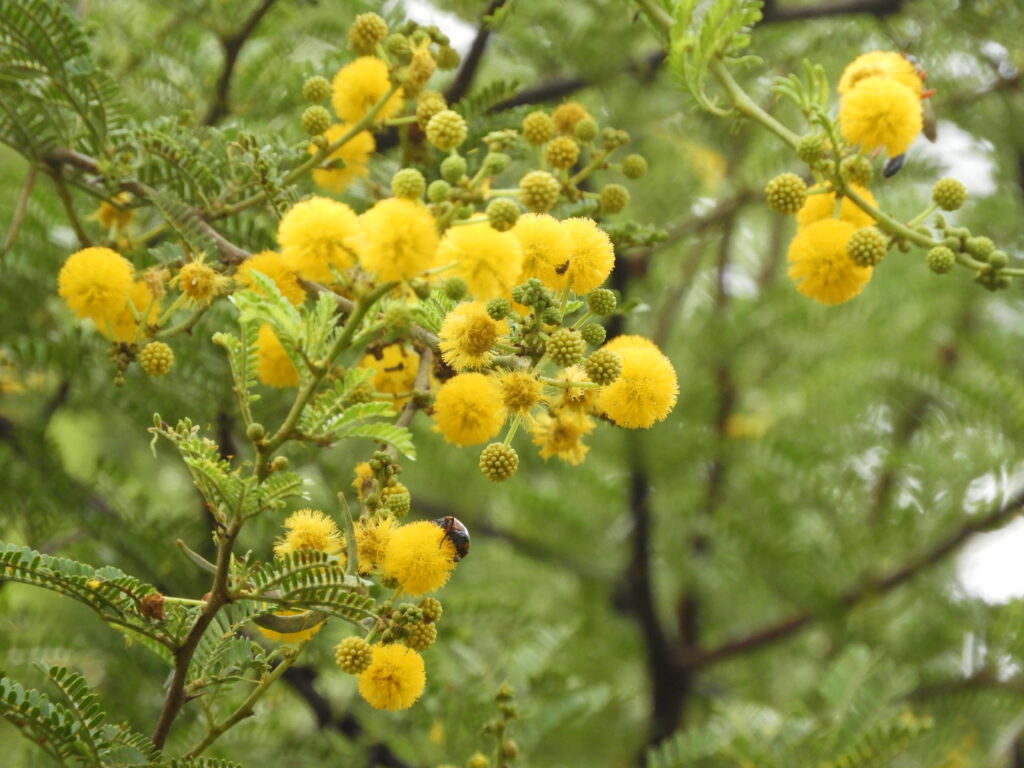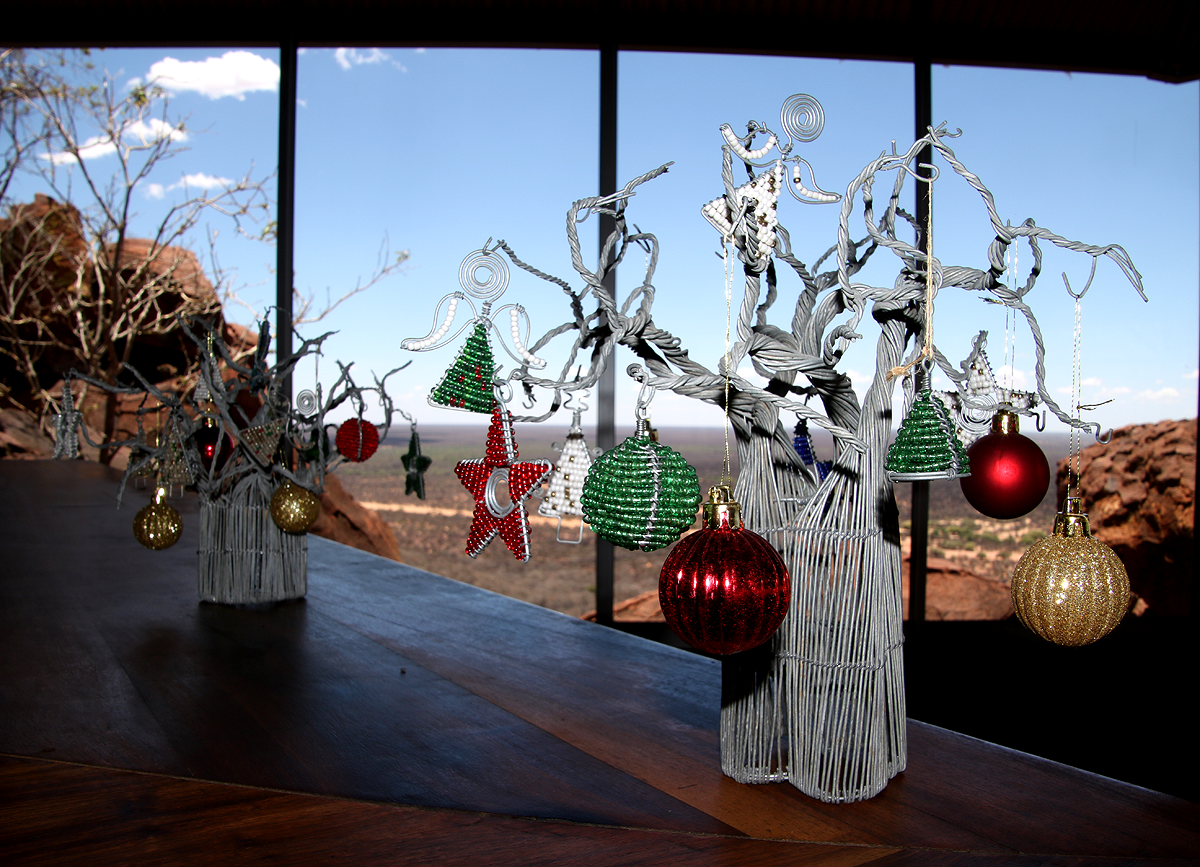In this edition of our newsletter, we will take a look at how acacias keep giraffes at bay and why Africa technically no longer has any acacias. We also introduce you to the tree that has become a popular Christmas tree substitute among Namibians.
A Christmas Tree Alternative
The sweet thorn acacia, commonly referred to as the “white thorn,” is the most widespread acacia species in southern Africa. Many Namibians use it or its branches as an alternative to Christmas trees. Its English and Afrikaans name, “Sweet thorn / Soetdoring,” alludes to the sweet scent of its golden-yellow flowers. During its blossoming period, they attract masses of bees, butterflies, and other insects.
The sweet thorn’s adaptability across various habitats in southern Africa has resulted in different growth forms, which may lead to some confusion. However, its most distinguishing feature is undoubtedly the long white thorns adorning its branches. Interestingly, early explorers reputedly used these thorns to secure the insects they collected. The tree might not have anticipated this use of its thorns.
Those thorns primarily serve as a natural defense against herbivores. However, giraffes, with their thick skin and tongues measuring up to 30 cm in length, can still effortlessly reach the leaves. Nevertheless, acacias have devised a brilliant countermeasure.
Giraffe Approaching
Surprisingly, it’s not just humans and animals that can communicate with each other; trees can do it too. Acacias, for example, warn their fellow trees of potential threats by emitting a special scent, ethylene. When other acacias detect this scent, they store bitter compounds, tannins, in their leaves, rendering them unpalatable to giraffes and other herbivores. A similar scent-warning system has been observed in trees worldwide.
Each nearby acacia automatically equips its leaves with the same bitter compounds, which is unfortunate for a hungry giraffe. However, giraffes outsmart this system by checking the wind direction – a task made easier with their elongated necks – and then moving from tree to tree against the wind. One question remains: Are giraffes aware that there are no longer acacias in Africa today?
How Africa Lost Its Acacias
The name “acacia” originates from the Greek word “akis,” meaning “point” or “barb.” There are approximately 1,400 acacia species worldwide. However, in the early 2000s, DNA studies indicated the need to classify them into at least five genera. This triggered a heated debate over which group should retain the name “Acacia”: the one with the species originally called “Acacia” (the so-called “type species”), following the traditional priority principle, or the one with the most species, for practical reasons.
After a contentious process, Australia secured the definitive decision with its approximately 960 species at the International Botanical Congress in Melbourne in 2011. Otherwise, only about 160 African species would have retained the name “Acacia.” Instead, African species were assigned to the new genera “Vachellia” and “Senegalia”.
Outside the confines of the botanical sphere, this name change went largely unnoticed. Despite these botanical nomenclature adjustments, the significance remains unchanged for giraffes — they won’t let anyone take away their acacias.
We hope you have enjoyed our newsletter and wish you a joyful pre-Christmas season!

The sweet fragrance of the golden yellow flowers attracts numerous bees, butterflies, and other insects.




